Updated:
May 19, 2020
Chatti
provides a cloud communications platform for a wide range of customer and
business needs. Recognising the importance of information security, we have
invested considerable time and effort into ensuring our platform’s security.
This document summarises various technical and organisational security measures
we have implemented to protect our customers’ data from malicious or accidental
destruction, alteration, loss, unauthorized access or disclosure.
Physical Access Control
Chatti
is a technology partner of Vonage. Chatti’s data processing environment is
built on the IBM SoftLayer platform with geographically distributed Tier IV
data centres. IBM SoftLayer complies with various security standards -
including ISO/IEC 27001:2013, ISO/IEC 27017:2015, ISO/IEC 27018:2014, ISO
22301:2012, ISO 31000:2009, HITRUST CSF v8.1, SOC 2, SOC 3 - and guarantees
protection of physical infrastructure and facilities.
Chatti
stores all production data in physically secure data centres, including IBM
SoftLayer, Amazon and Google facilities. Chatti’s cloud storage vendors (Google
Cloud Datastore, Amazon DynamoDB, and Amazon Simple Storage Service (S3)), are
compliant with ISO/IEC 27001:2013, ISO/IEC 27017:2015, ISO/IEC 27018:2014, SOC
2, and SOC 3. In addition, Google Cloud Datastore complies with NIST 800-171.
Chatti’s
office facilities are secured by interior and exterior video surveillance,
alarm systems, security gates, and doors equipped with access card readers or
locks. Authorized visitors are provided with escort-controlled access.
System Access Control
Chatti
data processing systems are designed to ensure only authorized access and
processing of customers’ data.
Only
a limited number of authorized personnel have access to the data processing
environment via a VPN endpoint defining specific access scope based on the
assigned functional role. Access scope is enforced on multiple levels including
VLAN-based isolation at the data link layer. The authentication mechanism
employed is two-factor, requiring possession of the machine with the VPN
public/private key pair and knowledge of LDAP credentials. Password policy
mandates that LDAP passwords to access the data processing environment follow
composition, minimum size, reusability, and expiration rules.
The
granting or modification of access rights follows an established workflow with
a mandatory approval from the line management. Workflow tools provide
accountability through recordkeeping.
All
account actions can be traced to the particular user taking action on the
account. The time, date, and type of action are recorded for all privileged
account actions.
Data access and personnel security
Only
properly authorized personnel are allowed to access and manage customer data.
Team-wide security roles covering critical tools and applications are applied.
Chatti’s
onboarding process mandates that domain credentials for each employee are
requested by the HR function in a formal, accountable manner. Employment
termination triggers revocation of issued credentials.
Chatti
ensures that personnel are notified of significant requirements as well as
personal and corporate consequences of engaging in improper activities. All
employees complete a periodic mandatory security training and a Code of Conduct
training covering business ethics and professional standards, each at least
annually.
Customer access control & account
management
Customers
can manage their accounts through Chatti Customer Dashboard - a dedicated web
page which supports two-factor authentication and IP address verification
security mechanisms. If enabled, Chatti Customer Dashboard will in addition to
customer’s password require a one-time verification code - an SMS sent to the
phone registered on the customer’s account when the customer’s IP address
differs from the one used previously.
Chatti
Customer Dashbord password-based authentication utilizes secure hashing and
salting to protect against impersonation and brute-force attacks.
Transmission Control
Chatti
supports HTTPS and SMPP over TLSv1.2 as main protocols for encrypted
communication. Chatti holds a public 4096-bit RSA-based wildcard certificate
covering *.chatti.com for authentication purposes.
Customers
are solely responsible for any decision to use unencrypted channels when
consuming Chatti services.
Chatti
does not provide telecom carrier services, and as such relies on carriers to
secure SMS channels since the SMS standard does not provide for end-to-end
encryption; encryption, if any, is determined by individual carrier.
Chatti
supports secure SIP signaling over TLS for protection of multimedia
communication control plane in inbound and outbound directions. Security, if
any, of PSTN-terminated/originated SIP control channel is determined by
individual carrier and cannot be guaranteed by Chatti. Media plane (voice path)
encryption is currently not supported by Chatti.
Network security and segmentation
Chatti’s
data processing environment is separated from the outside world and from the
test environment with firewalls. Fine-grained segmentation inside production
and test environments is achieved with the help of VLANs.
Chatti's
data processing environment is comprised of Linux servers each being protected
by a host-based firewall. Applications are grouped by types/categories and
there is no platform sharing between applications of different types.
Vulnerability management
Chatti
employs a three-fold vulnerability management strategy which includes proactive
updates of 3rd-party applications, internal monthly vulnerability scans, and
external penetration tests. Chatti keeps itself up to date with
patches/upgrades and updates 3rd-party applications promptly as new versions
are released. External penetration tests covering APIs, web applications, and
SDKs are performed quarterly. External infrastructure vulnerability assessment
is done annually.
Identified
vulnerabilities are assessed on an individual basis. Chatti utilizes a
risk-based approach to the patch management process and commits to mitigate
vulnerabilities according to the following time frame:
a.
Critical,
CVSS Score > 8 - in 30 days
b.
Severe,
4 ≤ CVSS Score ≤ 8 - in 90 days
c.
Other
- in the next patch cycle
Emergency
patching for threats of imminent danger to systems or data should occur within 7
days.
Change management
Chatti's
development process is built on the principle of segregation of duties and
employs mandatory reviews and approvals. Each change to production environment
is submitted by Development, tested by Quality Assurance, and reviewed by
Operations before deployment.
Web
applications and APIs provided by Chatti go through a rigid assessment process
which includes review of security controls following the OWASP Application
Security Verification Standard. Assessment is done by the external entity.
Logging
Apart
from system level logging to ensure traceability of account actions, Chatti
commits to logging of all API requests to recognize, investigate, and protect
customers from fraudulent activity. Among other information, logs contain:
source IP, account Id, type of activity and timestamp. All
successful/unsuccessful authentication attempts are logged and investigated, as
appropriate.
Customers
control and configure Chatti services through a portal (the Chatti Customer
Dashboard). To provide an audit trail, all changes and actions performed using
the customer dashboard are recorded.
Internal
administration activities are performed via tools accessible only by authorized
Chatti personnel. All activities including provisioning of Chatti services are
logged.
Business continuity
Chatti’s
business continuity planning incorporates procedures to sustain critical
functions, backup and recover data, and protect company assets.
Single
points of failure are eliminated for critical services with multi-node and
multi-channel network design and load-balancing strategy.
Chatti
follows a Data Backup Policy which mandates regular backups of configuration
and account data required for continuous service operation and usage of
off-site storage, and daily data restoration tests where appropriate.
Media protection and end-user security
Chatti
recognizes a potential internal attack surface originating from compromised
end-user machines used by Chatti employees, and to mitigate this threat
implements a set of security measures including hard drive encryption, secure
data erasure upon laptop decommissioning, virus/malware protection with
automated updates, browsing/traffic control, and centralized domain-based
authentication.
Data encryption and secure data redaction
Chatti
utilizes two main strategies to protect customer’s data: data encryption for
long-term data and limited data retention for short-lived data.
Chatti
retains data processing logs for a minimum of three days.
Chatti
provides, upon customer’s request and subject to applicable legal requirements,
a true data anonymization by means of data redaction. Data redaction is a
one-way process that substitutes original data with a predefined set of
characters that reveals no information on the original data except that it was
anonymized.
Report a security vulnerability
If you believe that you
have found a Chatti security vulnerability, please email us security@chatti.com .





































